INDEX
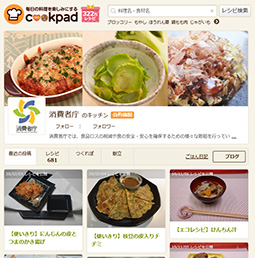
“The Kitchen of the Consumer Affairs Agency” introduces waste-avoidance recipes on the popular Cookpad website 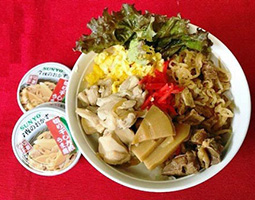
A chicken dish made from soon-to-expire emergency stockpile food, served at the student cafeteria of Dokkyo University 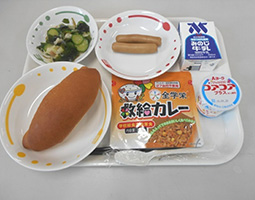
Retort-pouch curry (center), an emergency stockpile food, served at elementary and junior-high schools in Toki City, Gifu Prefecture
May 2020
Japanese “Mottainai”Culture: Reducing Food Loss and Waste
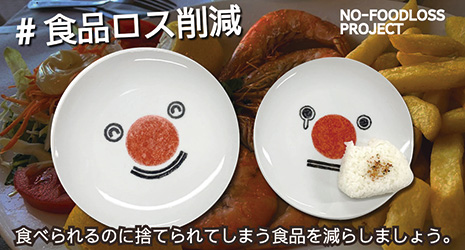
“Food loss” has become a global problem. Japan has set a national target of halving food loss and waste compared to 2000 by 2030. To this end, a number of actions have been taken to reduce potential “discarded” food that can still be eaten.
There is a huge amount of “food loss and waste” around the world every day. According to a report by the Food and Agriculture Organization of the United Nations (FAO) in 2011, global food loss and waste reached 1.3 billion tons annually. Around a third of the world’s food was lost or wasted every year.
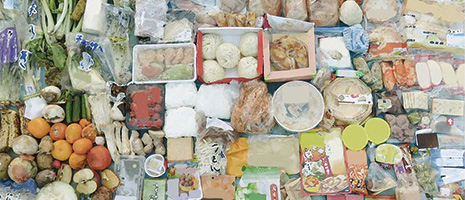
Immense resources and energy are used to produce, consume and dispose of food, so if food loss and waste can be cut, this would also contribute to a decrease in greenhouse gas emissions. As such, the Sustainable Development Goals (SDGs) adopted by the UN in 2015 includes the following target: “By 2030, halve per capita global food waste at the retail and consumer levels and reduce food losses along production and supply chains, including post-harvest losses.”
According to statistics in April 2020 presented by the Ministry of Agriculture, Forestry and Fisheries and the Ministry of the Environment of the Japanese government, food loss and waste in Japan in 2017 was an estimated 6.12 million tons. Of that, 3.28 million tons came from the food manufacturing industry, food service and other businesses, while 2.84 million tons came from households. In an effort to curtail this food loss and waste, the Act on Promotion of Food Loss and Waste Reduction was enforced in October 2019. The Act specifies that people should actively engage in cutting food loss and waste, that all of society should foster an attitude of not letting food go to waste, facilitate use of food that can still be eaten without discarding it, and that a wide range of actors cooperate to promote a reduction in food loss and waste.

Based on the abovementioned act, the Basic Policy on Promotion of Food Loss and Waste Reduction was approved by the Cabinet in March 2020. The basic policy expects consumers to take actions like only buying what they can use up, not wasting ingredients that can be eaten, and controlling the amount of dishes they order when eating out. It also expects the agriculture, forestry and fisheries sector to promote use of non-standard and unused products and food-related industries to extend food products’ best-before dates through innovation in packaging technology.
National and local governments are accelerating these expectations through activities such as education on food loss and waste and by supporting the efforts of actors in food-related industries. The targets are to increase the proportion of consumers aware of and acting to reduce the food loss and waste to 80% (76.5% as of January 2020) and to halve food loss and waste from both businesses and households.
Disaster Management and Food Loss & Waste Reduction
Various bodies take actions to reduce food loss and waste in Japan. The effective use of stockpile food for disasters is one example. Japan suffers from a lot of natural disasters, including typhoons and earthquakes, so the Japanese government recommends each household stockpile a week’s worth of food to prepare for such disasters. However, if large amounts of ready-made meals and cans are stored only for the case of emergency, then they might be disposed of because they cannot be consumed before their expiration dates. Thus, as a way to stockpile food without causing waste, the Consumer Affairs Agency of the Japanese government has introduced the concept of a “rolling stock method” whereby consumers buy a bit more of the foods that they normally eat and then replenish them when they eat. By picking things nearing their expiration dates for regular meals, consumers can reduce food loss and waste.
The following are examples of initiatives launched in Japan.
Tokyo Metropolitan Government donates emergency stockpile foods like crackers and instant rice to social welfare corporations and other groups and distributes them to citizens at events when they are about to expire.
At the student cafeteria of Dokkyo University in Soka City, Saitama Prefecture, food stockpiled by the university for emergencies has been used in cafeteria meals when items near their expiration dates, as a way to increasing students’ and teachers’ awareness about disaster management and food loss and waste.

In Toki City, Gifu Prefecture, the municipal board of education stockpiles retort-pouch curry which does not need tableware and can be eaten without cooking for teachers and children at elementary and junior-high schools, but periodically they also use it as a lunch menu item. This attempt is a part of disaster management education and an effective use of stockpiles.


